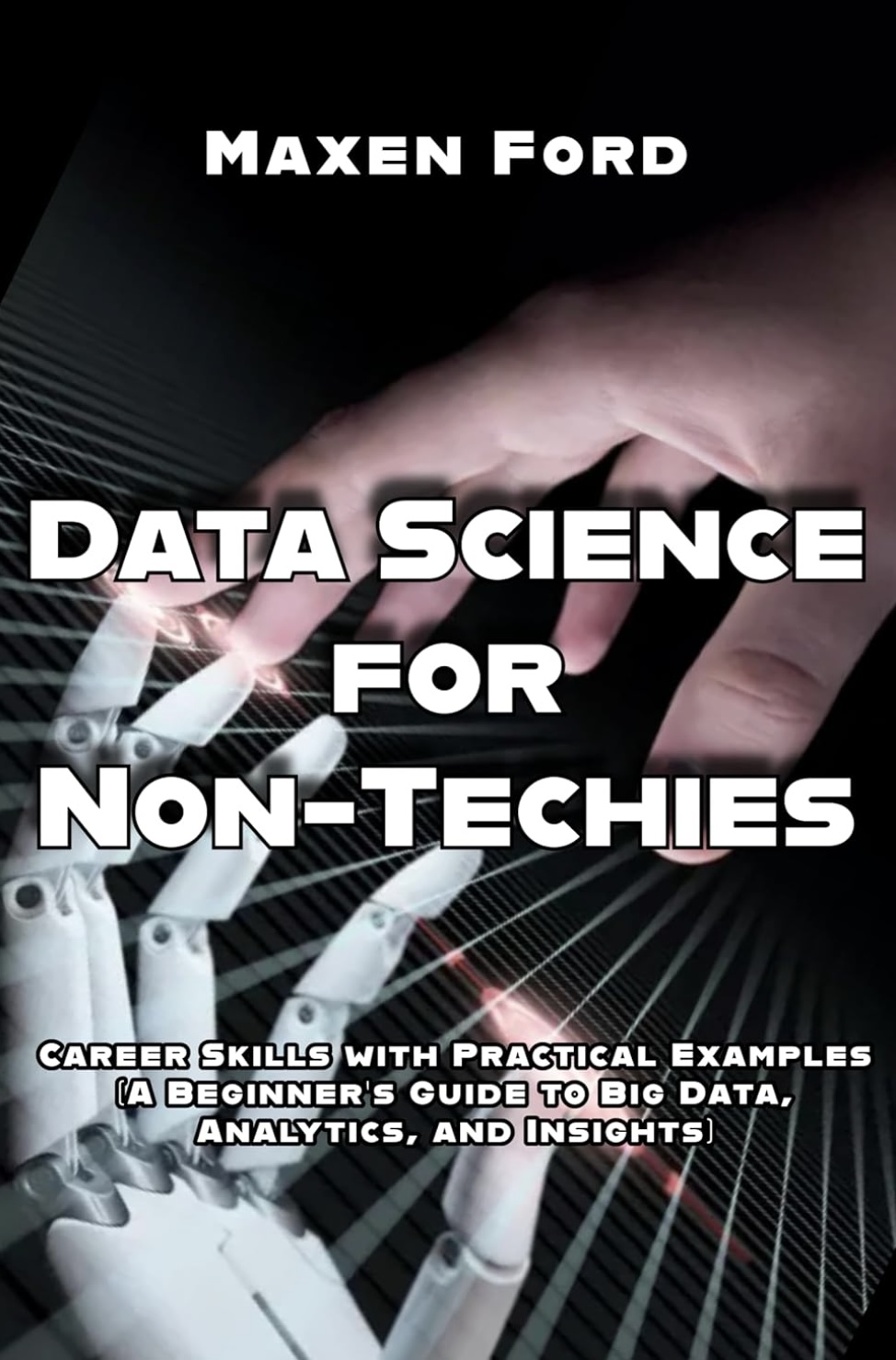
Data Science for Non-Techies: Career Skills with Practical Examples (A Beginner’s Guide to Big Data, Analytics, and Insights by Maxen Ford gives an overview of the basic concepts and skills used in data science. It offers great encouragement for people without high technical skills to learn and use data skills to tell stories that can drive important decisions in any organization. Be sure to grab a copy for your professional development library.
Introduction
- You don’t need to be a programmer, a mathematician, or a tech genius to understand data science. The goal of this book is to make the world of data available to anyone willing to invest some time. The ability to understand and work with data is no longer optional. Here is your chance to boost your career, solve problems, and unlock new opportunities.
1. why Data Science Matters in Today’s Job Market
- Data literacy is one of the most in-demand skills across nearly every industry including education and medicine. If you can interpret data, you can deliver real value to any organization. It allows you to back your decisions and recommendations with evidence, anticipate future trends, and adapt quickly to change.
- Data science has created new career paths. Among the most sought-after roles are data analysts, business intelligence experts, and data-driven product managers. They are further described here and are open to anyone who is willing to learn how to work with data. The idea is to turn raw data into meaningful recommendations that can be communicated and acted on.
2. Core Concepts of Data Science Explained Simply
- Data science is the art and science of extracting insights from data to support decision-making, problem solving, and predicting future outcomes. The field contains a lot of jargon. One goal is to translate jargon into understandable language. For example, an algorithm is a step-by-step set of instructions for solving a problem. Big data is a data set too large to handle by traditional methods.
- Data can be neatly structured in rows and columns or unstructured as text, images, audio, or video. Step one is to collect the data. Then you need to clean the data, which can be time consuming. Then it’s time to explore and analyze your data with the aim of modeling or predicting. Finally, you interpret what you found and communicate the results. In the process you may need to leann how to use tools like Excel, Tableau, and Google Data Studio.
3. Essential Data Tools for Beginners
- The basic tools of data science are spreadsheets, like Excel, SQL, a structured query language that interacts with databases, Tableau, a data visualization tool, and Python, a simple and readable programming language. Learning how to visualize data is important as it turns numbers into visuals that are much easier for your audience to grasp.
- Tools that don’t require coding (programming) include Google Data Studio and Microsoft Power BI. There are also low code tools like Airtable, Appsheet, Zapier, and Microsoft Power Automate. They often include collaboration features so teams can share dashboards and update data in real time. This eliminates the need for emailing files back and forth and you can work from anywhere.
DrDougGreen.com If you like the summary, buy the book





